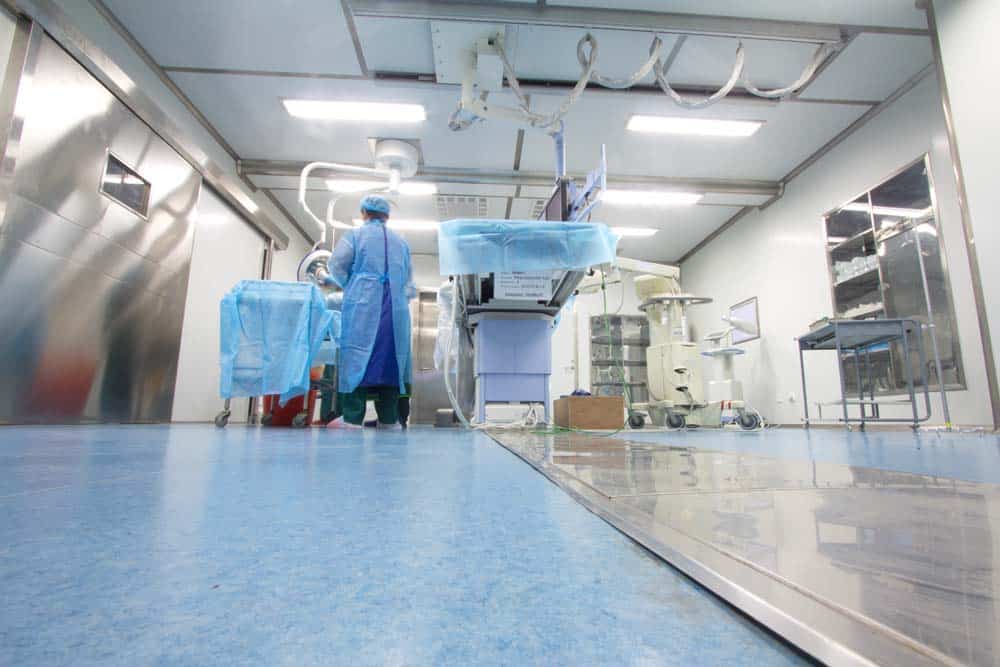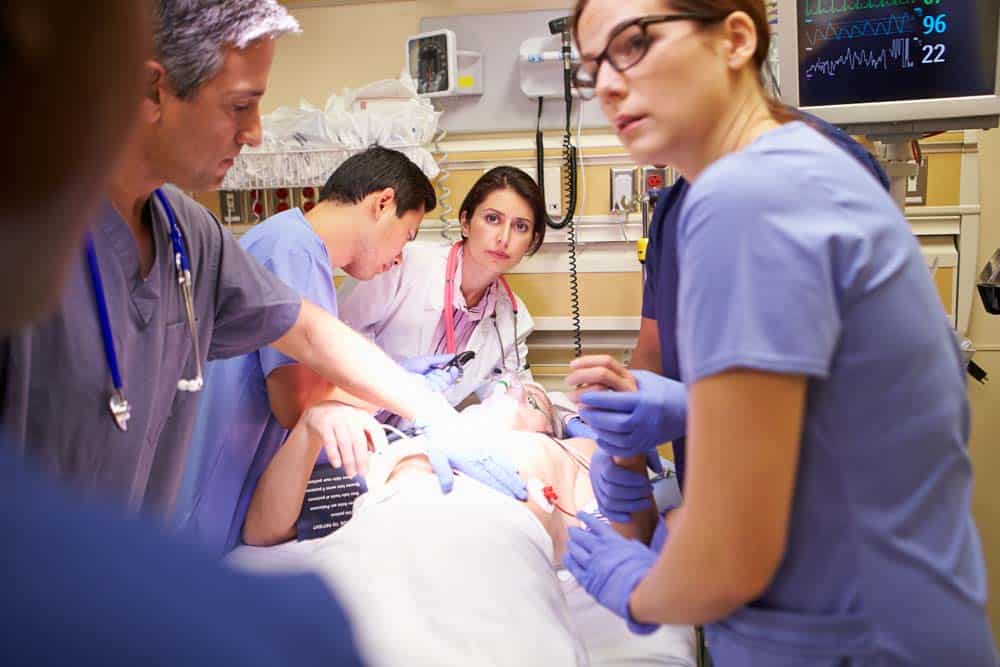https://www.youtube.com/watch?v=cUvOwZYbdYs
Hospitals are surprisingly dangerous work environments. Figures from the Bureau of Labor Statistics (PDF) suggest that on average, U.S. hospitals recorded 6.8 work-related injuries and illnesses for every 100 full-time employees in 2011. That figure is almost twice the rate of private industry as a whole and higher than both the construction and manufacturing industries.
In 2014, more than 294,000 hospital workers suffered from a nonfatal workplace injury or illness. Many of these accidents required staff members to go on sick leave and cost the hospital a significant amount of money.
To help you understand some of the issues involved with workplace safety in hospitals, this article will take a look at the Occupational Safety & Health Administration regulations for hospitals.
The Financial Cost of Injuries in The Workplace
In addition to the physical injuries that hospital workers often sustain, there are significant financial costs associated with injuries in the workplace including:
- Worker’s compensation costs
Compensation must be paid to cover the worker’s lost wages and medical costs - Temporary staff and overtime costs
In many cases, temporary staff must be hired to cover the shifts of injured workers. Overtime may be incurred when other employees work late to cover for an injured co-worker. - Employee turnover costs
If an injured employee is forced to leave their job, the hospital faces employee turnover costs which can be significant. - Productivity is negatively impacted
If staff members are regularly injured in the workplace, their ability to work productively may be impacted. - Patient care is compromised
Staff who are injured may struggle to lift or move patients. This can put the safety of patients at risk. Workers who are injured, fatigued or stressed are also more likely to make a mistake when treating patients.
How Are Workers Getting Hurt in Hospitals?
Many of the tasks that hospital staff members are asked to carry out have a high risk of injury. Lifting and moving patients, working with needles, handling body fluids and managing agitated patients are all quite dangerous activities. Based on 2011 figures from the Bureau of Labor (PDF), the most common ways that workers are injured are:
- Overexertion and bodily reaction (48%)
- Slips, trips, and falls (25%)
- Contact with objects (13%)
- Violence (9%)
- Exposure to substances (4%)
Safety and Health Management Systems
The Occupation Health and Safety Administration (OHSA) suggests that all hospitals should have a comprehensive safety and health management system in place. This system must proactively address the major causes of worker injuries in hospitals. It should also identify and fix hazards before they can cause an injury.
The process of developing a safety and health management system should be collaborative. This is because staff members are well-positioned to identify safety hazards in the workplace.
The management system should cover all potential hazards in the workplace including handling patients, dealing with workplace violence, and infection control. It should also provide information for workers on avoiding slips, trips, and falls in the workplace. The core elements of a safety and health management system include:
- Management leadership
The hospital’s management team must demonstrate that they are committed to improving the safety of the hospital. This commitment should be clearly communicated with staff in writing. Management should set safety goals, provide access to safety information and safe information on the relevant OHSA regulations for specific tasks. - Employee participation
In most hospitals, employees are the best resource for identifying health and safety hazards. The hospital should obtain feedback from employees on a regular basis about any safety concerns they may have. - Hazard identification and assessment
There must be processes and procedures for identifying hazards within the hospital. - Hazard prevention and control
Guidelines and processes should be created to eliminate hazards. For example, the hospital should have clear processes for dealing with spilled body fluids or handling used needles. - Education and training
Staff must be continuously trained to identify and avoid hazards. It is also important that staff members understand which steps to take when they notice a potential safety hazard. - Program evaluation and improvement
Processes should be created to monitor the success of the hospital’s safety and health management system.
The OHSA Obligations for Hospitals
The OHSA has created a useful eTool to help hospitals and staff members understand the applicable regulations for certain activities. The eTool covers many topics including:
- Dealing with hazardous chemicals
- Avoiding needlestick injuries
- Dealing with infectious agents
- Dealing with workplace violence
Hospital administrators should familiarize themselves with this online tool to ensure their facility remains safe for their staff.
The Importance of Ergonomics in Hospitals
Because overexertion is by far the most common source of injury in hospitals, close attention should be payed to ergonomics. Most overexertion injuries occur as a result of improper patient handling. One study found that in 2011, improper patient handling was responsible for 25% of all worker compensation claims in the health industry.
On average, each worker’s compensation claim relating to an injury from improper patient handling costs a hospital more than $15,000. There are also other costs associated with improper patient handling including incident investigation time, employee turnover, productivity losses, and overtime costs. Patients may also be injured by a staff member who does not use the correct OHSA protocols for moving them.
The OHSA defines ergonomics as the science of fitting the job to the worker. Instead of asking a worker to lift a heavy patient and risk injuring themselves, the OHSA suggests modifying the workplace and workplace practices so the task is easier for the worker. The hospital should provide the training, equipment, and safety guidelines necessary for a staff member to accomplish any task without being injured.
The OHSA also suggests that the workplace is examined for any potentially dangerous ergonomic stressors including tasks that involve awkward postures, repetition, heavy weights, the use of force, or vibration. Other solutions to overexertion hazards identified by the OHSA include:
- Continued training of staff by management
- Technology being installed to assist with repetitive motions and heavy weights
- A complaint/suggestion system for employees to notify management of problems
- Accurate injury reporting
- Fitness programs
- Very clear lifting guidelines for staff members
OSHA Slips Trips and Falls Regulations
The other area where hospitals should be particularly vigilant is slips, trips and falls. They are the second most common cause of injuries within hospitals and must be proactively addressed. Most slips, trips, and falls are caused by spills, wet floors or clutter — all common in busy hospitals.
Some of the measures suggested by the OHSA to reduce the risk of slips, trips, and falls include:
- Keeping floors clean and dry
- Using warning signs and barriers to prevent people from slipping on wet floors
- Keeping high traffic areas and exits clear of clutter
- Reporting spills immediately so they can be addressed
- Asking staff to wear waterproof footwear
- Using no-slip waxes on and floors
- Only using high-quality ladders for reaching high objects instead of stools, chairs or boxes
- Replacing frayed or stretched carpets that present a trip hazard
- Eliminating clutter — particularly objects on the floor
- Providing good lighting so staff can watch their step
- Eliminating uneven flooring surfaces
- Adhering to the OSHA guidelines for safe Walking-Working surfaces
With some basic planning and these simple strategies, the number of injuries within a hospital can be greatly reduced — improving working conditions for your staff and improving the financial position of the hospital.
Sources
(2016). Retrieved 24 September 2016, from https://www.osha.gov/dsg/hospitals/documents/1.1_Data_highlights_508.pdf
Hospital workers suffered 294,000 nonfatal workplace injuries and illnesses in 2014 : The Economics Daily: U.S. Bureau of Labor Statistics. (2016). Bls.gov. Retrieved 24 September 2016, from http://www.bls.gov/opub/ted/2016/hospital-workers-suffered-294000-nonfatal-workplace-injuries-and-illnesses-in-2014.htm
Hospital eTool. (2016). Osha.gov. Retrieved 24 September 2016, from https://www.osha.gov/SLTC/etools/hospital/
Hospital eTool: Healthcare Wide Hazards – Ergonomics. (2016). Osha.gov. Retrieved 24 September 2016, from https://www.osha.gov/SLTC/etools/hospital/hazards/ergo/ergo.html
Hospital eTool: Healthcare Wide Hazards – Slips, Trips and Falls. (2016). Osha.gov. Retrieved 24 September 2016, from https://www.osha.gov/SLTC/etools/hospital/hazards/slips/slips.html
General requirements. – 1910.22. (2016). Osha.gov. Retrieved 24 September 2016, from https://www.osha.gov/pls/oshaweb/owadisp.show_document?p_table=STANDARDS&p_id=9714





